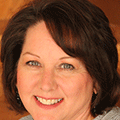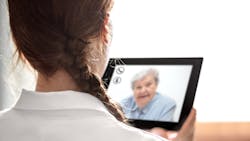2020: Implementing technology for a clear vision to an accomplished career
Most of us will never forget the hard work and stress that was required to join the ranks of oral health-care professionals. Our reasons for doing so were numerous. It might have been a desire to help others, a love of teeth, the urge to use intellect and skill to resolve health-care issues, or a combination of these.
The journey probably began with high hopes for a fulfilling career that offered flexibility and stability, the ability to make a positive difference in people’s lives, and a decent living. Some hygienists have found these satisfactions throughout their careers, but others may not feel quite as fortunate. The recent advancements in teledentistry can now provide many new opportunities for hygienists to enjoy a fulfilling and exciting career.
In the United States, 66% of adults have not visited a dentist in the last 12 months.1 This is across all income levels, which eliminates cost as the only reason patients do not receive dental care. Caries is still the number one childhood disease and the number one reason children visit their school nurses.2 Poor children suffer twice as much dental decay, and only half of Medicare recipients have visited a dentist during the last 12 months.2 It’s clear that our current system is failing most of the population, with the healthiest and wealthiest people receiving the most care.3
The concept of teledentistry has been discussed frequently in recent years, but confusion still exists regarding what it is and how it can enhance your dental hygiene career. The American Dental Association defines teledentistry as “a combination of telecommunications and dentistry involving the exchange of clinical information and images over remote distances for dental consultation and treatment planning.”4 It allows providers in different locations to coordinate care for patients and efficiently provide care to many different communities. In short, teledentistry brings care to patients where they are, effectively breaking down barriers to care.
Medical professionals have already recognized improved outcomes from delivering education, preventive services, and early diagnostic intervention in communities using telehealth technology. The Health Resources and Services Administration (HRSA) defines telehealth as “the use of electronic information and telecommunications technologies to support long-distance clinical health care, patient and professional health-related education, public health, and health administration.”5 Telecommunications technology for health care is being used to deliver improved treatment in many areas, such as dermatology, wound healing, psychiatry, and postsurgical monitoring. It is no longer a trend; it has become the standard of care in many medical settings.
Teledentistry and dental hygienists are the dream team for addressing access to care and patient convenience barriers. This new model can also provide satisfactory options for hygienists in search of a change in their careers. Modestly armed with self-contained portable dental equipment and teledentistry technology, a dental hygienist can deliver preventive care and education to patient populations in the locations where they live and work.
The portable dental equipment enables comprehensive preventive care on-site, decreasing the need to travel extended distances during work or school hours. A teledentistry software program facilitates a connection between a hygienist and dentist for consultation, evaluation, treatment planning, and referral. Studies demonstrate that caries detection, when using an intraoral camera, can be as accurate as a tactile examination, making a teledentistry evaluation as effective as the current standard of care.6 This increase in efficiency and profitability can be enjoyed in both a public health and private practice setting.
Many hygienists across the country are already using their skills and a teledentistry model to bring care to underserved populations. They have taken their knowledge and skills and created programs using teledentistry to reach patients in a new way. This approach has made a measurable impact on the patients they see and has given them deep satisfaction in their careers.
Teledentistry success stories
Karen Witkowski, RDH, started Senior Smiles Georgia, which provides dental hygiene care for residents in 18 senior living communities in the Atlanta area. Witkowski and her team use mobile dental equipment to provide preventive care. They capture intraoral images and other clinical data in a teledentistry software platform, which is then shared with a dentist for remote evaluations and treatment recommendations. She says, “My practice is rapidly growing as more senior living communities realize the value and convenience of onsite dental care. On-site care is especially important for residents who find it difficult to be transported, such as elders who suffer from dementia or are wheelchair- or bedbound.”
Although Carol Roszel, RDH, practices in a state with a restrictive practice act, she has established a unique approach to use teledentistry to significantly improve the dental outcomes of her residential special-needs patients. As the program’s oral health-care coordinator, she provides biofilm management for all residents by creating daily oral health routines. Using an intraoral camera, she routinely screens her residents, often catching issues before they become emergencies. With teledentistry, she shares the images and notes with dentists at the local federally qualified health center for evaluation and treatment recommendations, which reduces the need for multiple patient transfers.
Teledentistry legislation varies from state to state. Prior to adoption of this practice model, it is extremely important to have an attorney review the governing state practice acts. Initial areas to examine are the details of supervision requirements. Are hygienists allowed to have an independent, collaborative, or affiliated practice? What services can be provided without a dentist on-site? Are there specific setting restrictions when working under alternate supervision requirements? In order to fully understand reimbursement issues, a complete investigation of state telehealth policies is required. The Center for Connected Health Policy offers the most up-to-date, state-specific telehealth policy information.7
Telecommunications technology has changed how we connect and communicate in every aspect of our lives, and now teledentistry is changing the way we connect patients with oral health care. Teledentistry allows hygienists to make impactful changes to an outdated model of care, bringing renewed career excitement and improved patient oral health outcomes.
References
1. Vujicic M, Nasseh K. A decade in dental care utilization among adults and children (2001-2010). Health Serv Res. 2014;49(2):460-480.
2. 2000 Surgeon General’s Report on Oral Health in America. Accessed January 26, 2020. https://www.nidcr.nih.gov/research/data-statistics/surgeon-general
3. Glassman P. Teledentistry: Improving oral health using telehealth-connected teams. American Teledentistry. August 2016. Accessed January 26, 2020. http://www.americanteledentistry.org/wp-content/uploads/2018/02/UofP_WhitePaper_Telehealth.pdf
4. D9995 and D9996–ADA guide to understanding and documenting teledentistry events. American Dental Association. July 17, 2017. http://www.ada.org/~/media/ADA/Publications/Files/D9995andD9996_ADAGuidetoUnderstandingandDocumentingTeledentistryEvents_v1_2017Jul17.pdf?la=en
5. Health Resources & Services Administration Glossary. Telehealth. Updated October 2019. https://www.hrsa.gov/about/strategic-plan/glossary
6. Pentapati KC, Siddiq H. Clinical application of intraoral camera to increase patient compliance–current perspectives. Clin Cosmet Investig Dent. 2019;(8);11:267-278. doi:10.2147/CCIDE.S192847
7. Telehealth Medicaid and State Policy. Center for Connected Health Policy. https://www.cchpca.org/telehealth-policy/telehealth-medicaid-and-state-policy
Eden Ivie, BSDH, RDH, PHDHP, has been practicing clinical dental hygiene since graduating from San Juan College in 2004. She earned her BSDH from Northern Arizona University in 2018. She uses her PHDHP license to provide preventive care for children in public health settings using teledentistry technologies. Ivie works as a teledentistry specialist for MouthWatch, where she provides training and implementation guidance for a range of dental care models embracing teledentistry.
Cindy Purdy, BSDH, RDH, has multiple decades of clinical dental hygiene experience, which have fueled her desire to improve workplace wellness and patient equity of care. She currently practices in a hybrid traditional/virtual teledental practice. Purdy holds a certificate of ergonomics from Colorado State University and earned her Certified Ergonomic Assessment Specialist credential, with emphasis on improving the health and performance of dental professionals by creating safe in-office workstations.
About the Author

Cindy M. Purdy, BSDH, RDH, CEAS
Cindy M. Purdy, BSDH, RDH, CEAS, has a passion for workplace wellness that has resulted in the creation of THRIVE, a dental-oriented wellness and therapeutic alternatives summit for dental professionals. THRIVE occurs three to four times annually at Glen Eyrie Castle in Colorado Springs, Colorado. Attendance information can be found at cindypurdy.com. In addition to multiple decades as a clinical dental hygienist, Cindy holds an ergonomic certification from Colorado State University, a certified ergonomic assessment specialist credential, and is certified in health-care ergonomics.
Eden Ivie, BSDH, PHDHP, RDH
Eden Ivie, BSDH, RDH, PHDHP, has been practicing clinical dental hygiene since graduating from San Juan College in 2004. She earned her BSDH from Northern Arizona University in 2018. She uses her PHDHP license to provide preventive care for children in public health settings using teledentistry technologies. Ivie works as a teledentistry specialist for MouthWatch, where she provides training and implementation guidance for a range of dental care models embracing teledentistry.
